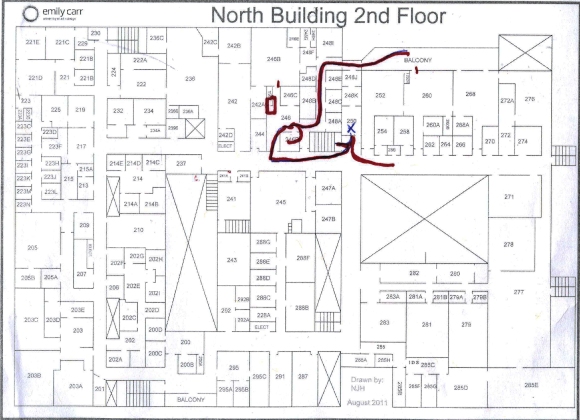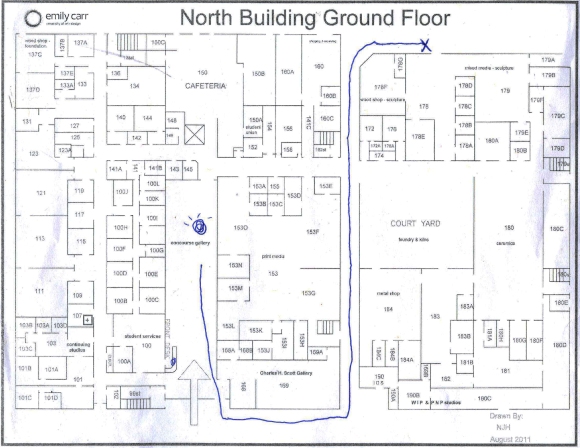So, Phoebe and I have been experimentin’ and we thought we’d update our internet fans with our findings. As stated and shown below, a portion of our research included taking “binaural walks“. The set-up included Phoebe wearing the binaural mic headband while I walked next to her, holding the zoom and listening with the headphones. Originally designed to be a test recording our the different possibilities of binaural, it ended up being an intense audio experience itself.
Because I was hearing 3D sound from the perspective of Phoebe but physically in my location, it ended up being quite disorienting. Even if Phoebe’s head was tilted slightly, the effect of hearing a car go past was enough for my mind to almost visually render it happening at an impossibly skewed position.

Based on these walks, we arrived at an entirely different position in our project. Our attention span strings had been tugged in a different direction. We now want to incorporate the binaural walks into our presentation. We turned to the idea of the Art of Memory(Ars Memorativa), which specifically means using physical locations and items to reference and organize memory making, into a our base thesis. “Techniques commonly employed in the art include the association of emotionally striking memory images within visualized locations, the chaining or association of groups of image” We are interested in the idea of having a memory tied to location, and experiencing that memory from a different location.
“Interest in spatial hearing is interdisciplinary. Important contributions to research on the subject have come from fields as diverse as psychology, psychophysics, physiology and medicine on the one hand, and engineering, physics and musical analysis on the other,”(Blauert xi.) By researching the history of binaural recording and found it to be heavily embedded in the militarty. Since the set-up for spatial hearing is the technique that most accurately mimics how the human ear “hears” it has been incorporated into studies of virtual reality(also heavily embedded in military funding). How engaging and realistic does this video sound?
Another surprising avenue of binaural audio is that of hearing aids. Since hearing aids are used to replicate yet amplify surround sounds, using binaural technology has helped created a directional mic shaped to pick up sounds similar to the way the human ear does. Previously, monaural was the standard way to implement hearing aids, but localization abilities diminished.
Now, in terms of our project, we decided to take people on “Binaural Walks.”
The event will include having the participators put on a binaural set-up and be taken on a guided tour. Certain events will transpire, and the participators are encouraged to have dialogue amongst themselves and the tour guide, in addition to have a certain amount of physical elasticity within the guided path. The group will then return to the “classroom” or original location, and then have a group listening session. After this, there will be a discussion on people’s experience with both the walk AND the listening to a different perspective. This discussion will also be archived in a binaural fashion.
We did a test walk today with our two schoolmates, Phil Woolf and Michelle Doyle.
Their separate audio files are below. Feel free to have a listen!















